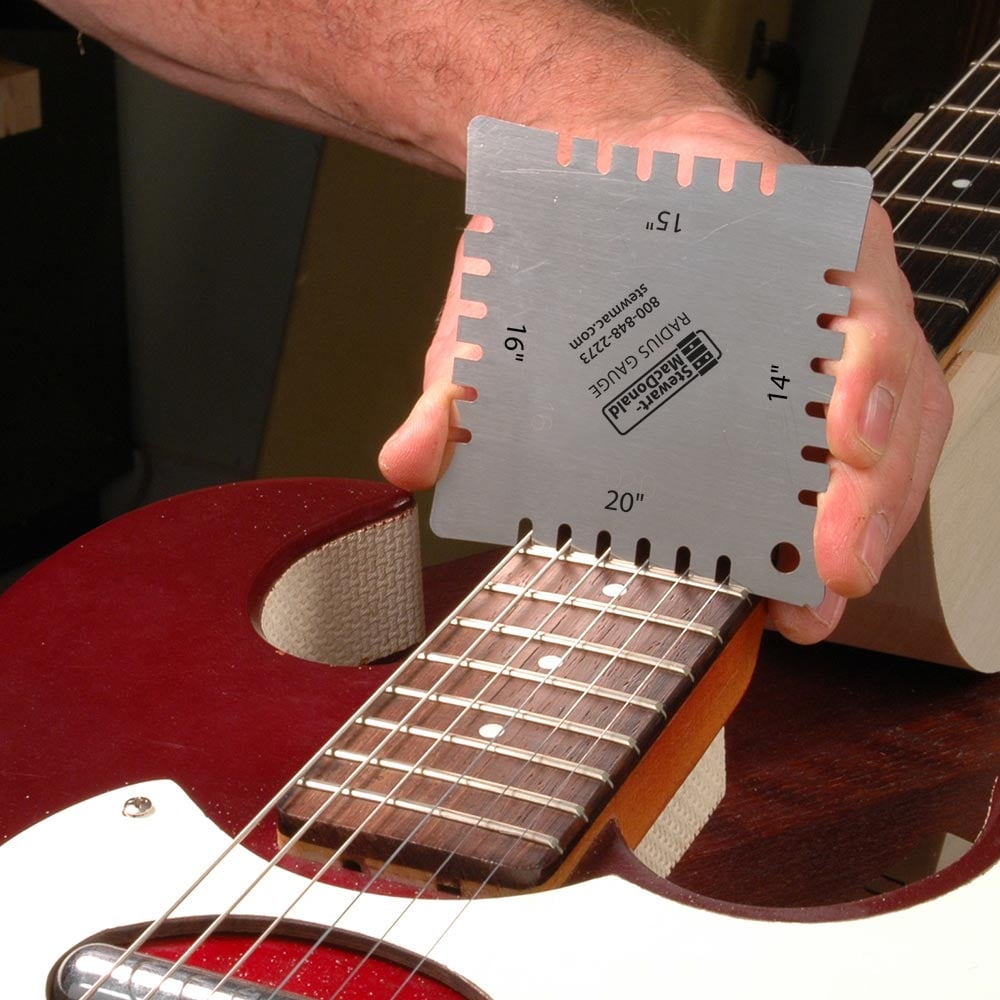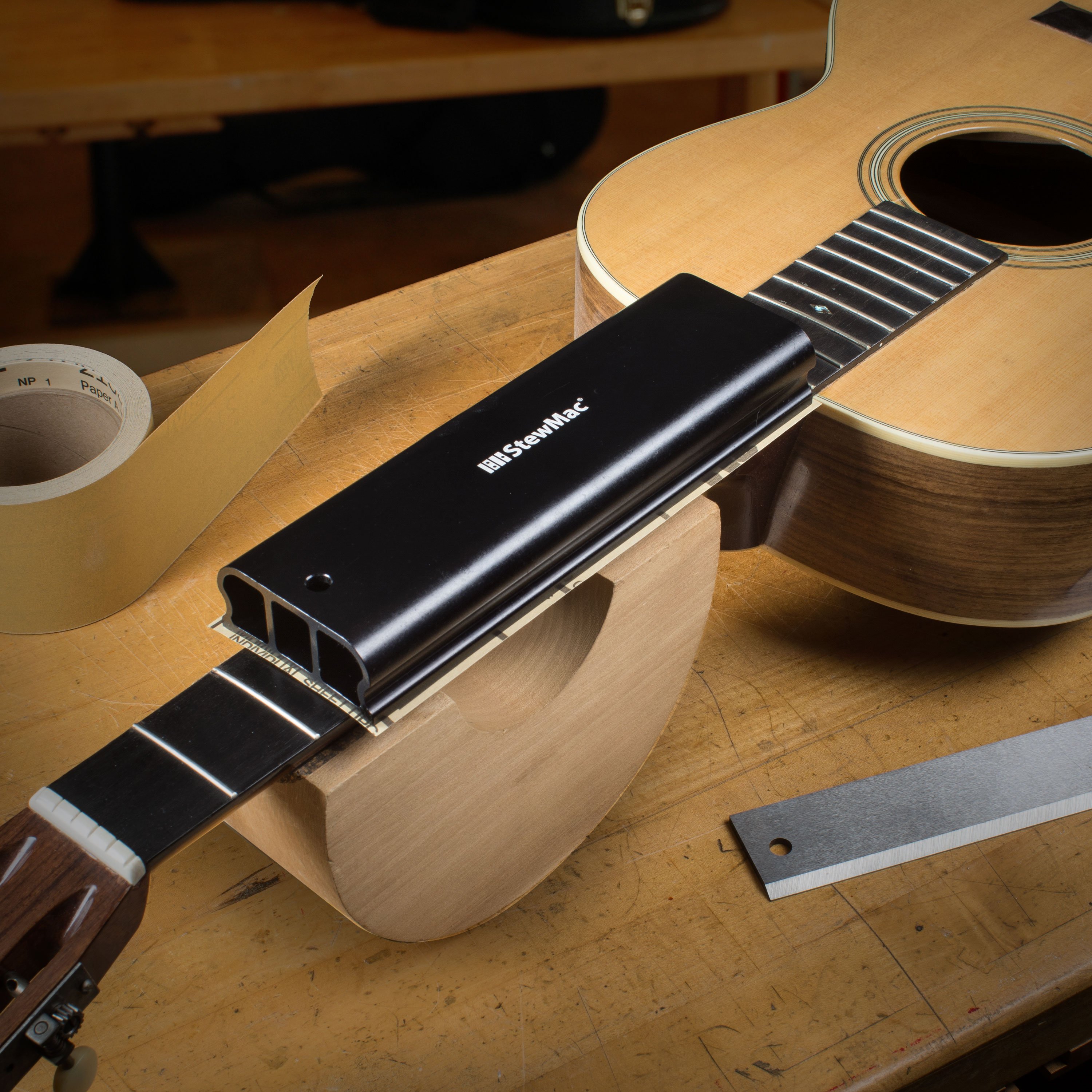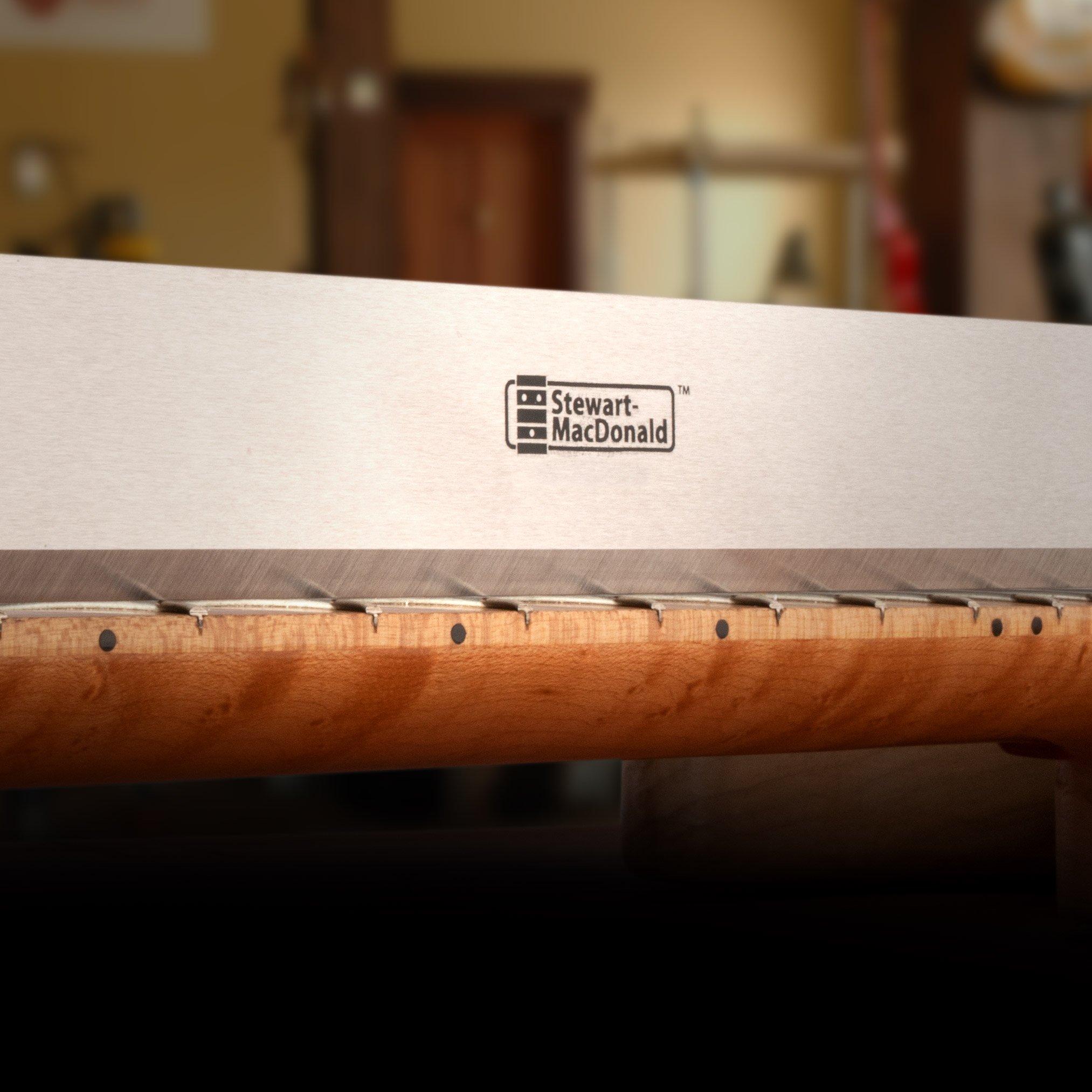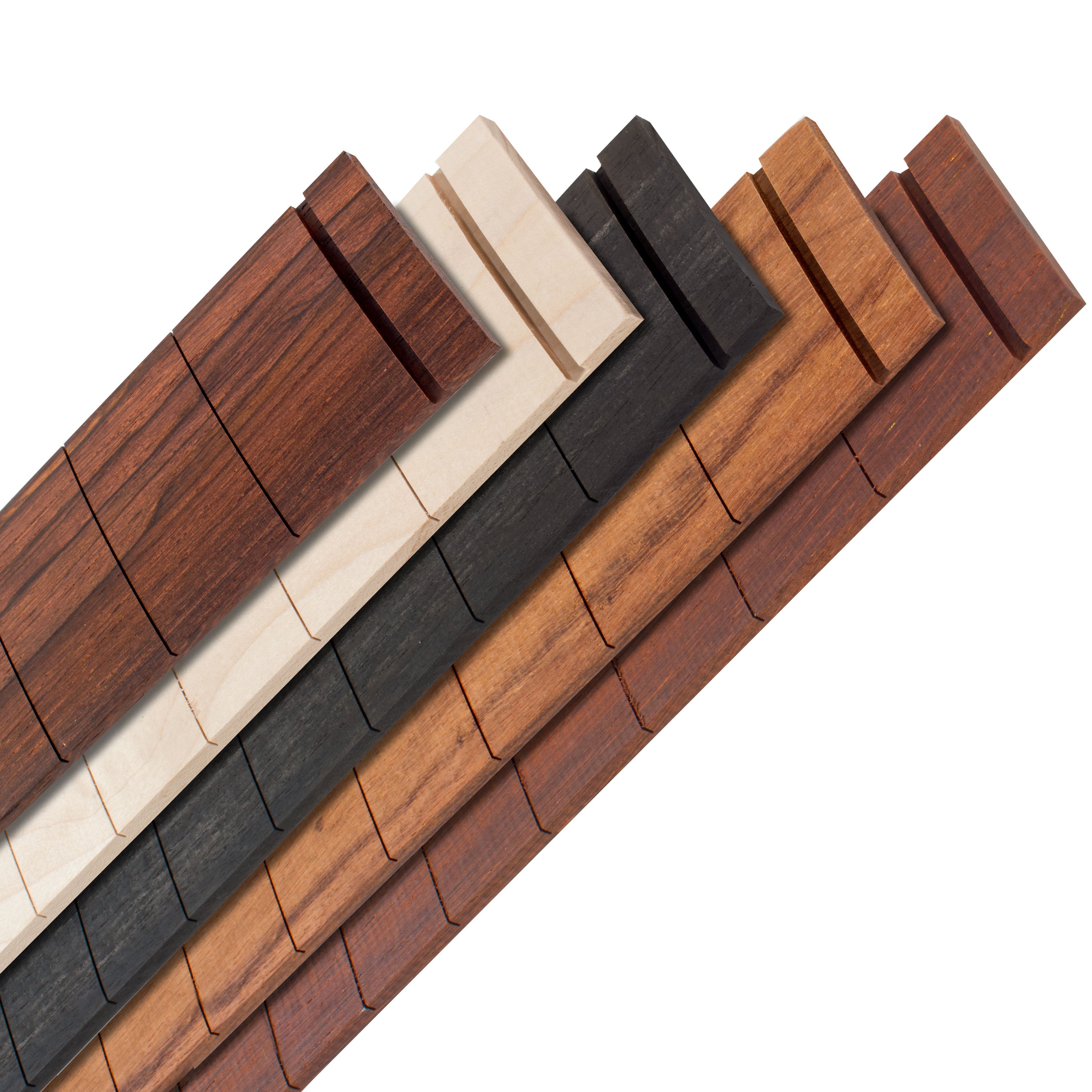Compound Radius: Explained
An explanation of compound radius fretboards.
On any fretboard, the tops of all the frets need to be aligned, either in a straight line or in a slight curve (called "relief"). Uneven fret heights are not acceptable, nor is too much curve, nor a reverse curve ("backbow"). All of these will cause playing problems. Any frets that sit above or below this ideal line will result in buzzing problems. Some fretboards are flat from side to side, and many more are radiused (rounded): Drawings form Dan Erlewine's Guitar Player Repair Guide With a flat fretboard, the strings can run at any angle and always be at a consistent height above the fret tops. A radiused board is uniformly curved its full length, as if it were the top of a cylinder. With a cylindrical fretboard surface, all the strings must be parallel to each other in order to keep a consistent height above the fret tops. See what happens when a string is turned at an angle to the cylinder: Typically, guitar strings are not parallel: they're closer together at the nut, and they spread wider apart at the bridge. For this reason, a fretboard should not be a cylinder. The strings would rise too far off the fretboard at some points. For comfortable playing, the fretboard needs to taper along with the strings, starting wide at the bridge and converging toward the nut. When you combine this idea of converging strings with a radiused fretboard surface, you get a cone shape: Straight lines (strings) following a cone's surface will not be parallel. They'll be tapered (converging to the point of the cone), the way we want our guitar strings to be. If they follow any other line, they'll create playing problems or string buzz too: We refer to these conical fretboards as "compound radius" fretboards. Now that we see that the fretboard needs to be conical for lowest action, we can also see that the spread of the strings and the changing radius of the surface are interconnected. Once you determine the radius at the nut and the spread of the strings, the radius at the bridge is determined by those values. These photos show exaggerated radii, of course, to show the principle. A guitar string that's just a few thousandths of an inch too high or low will make a big difference in playing action and fret buzz. Don MacRostie's formulas for compound radius are from Fretwork Step by Step X = Distance from the nut to the Origin (focal point) Rn = Fingerboard radius at the nut Rd = Fingerboard radius at "D" (a certain distance from nut) D = Arbitrary distance from the nut





How to determine a radius at any point on a fretboard



